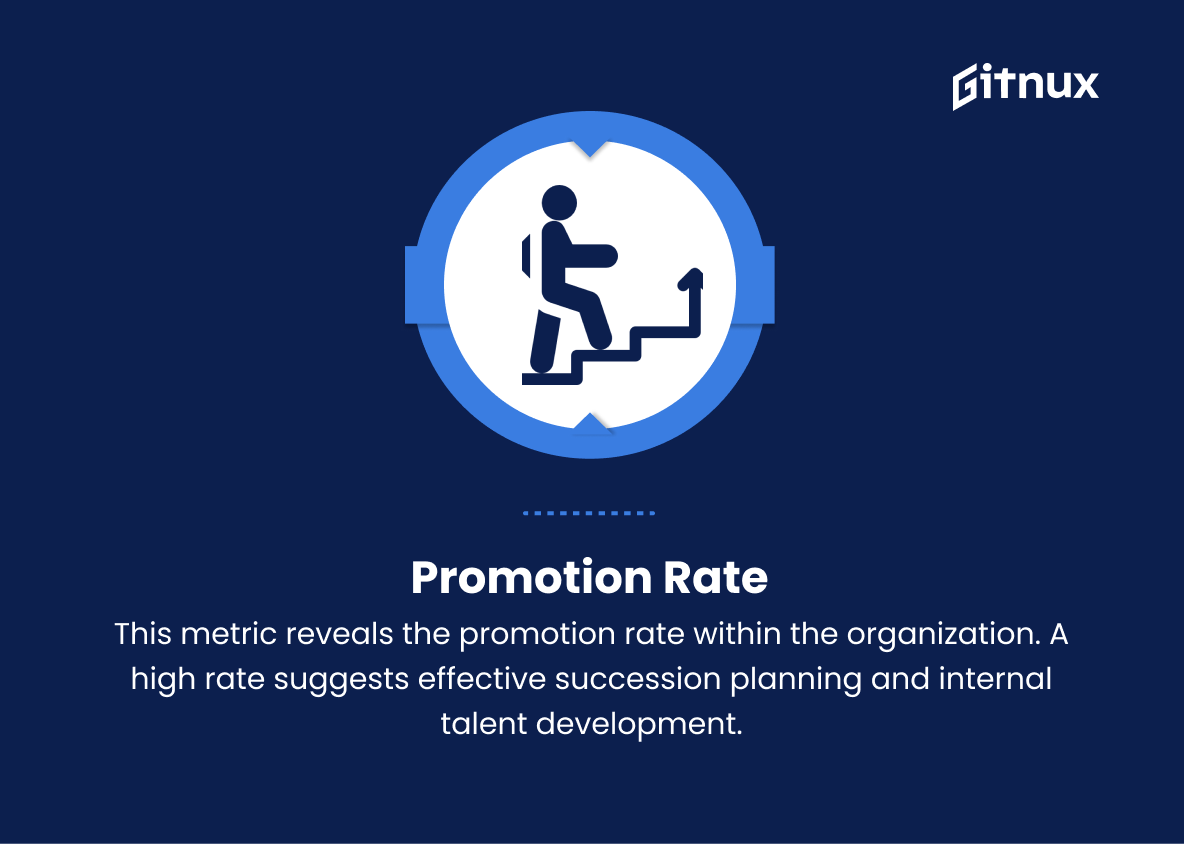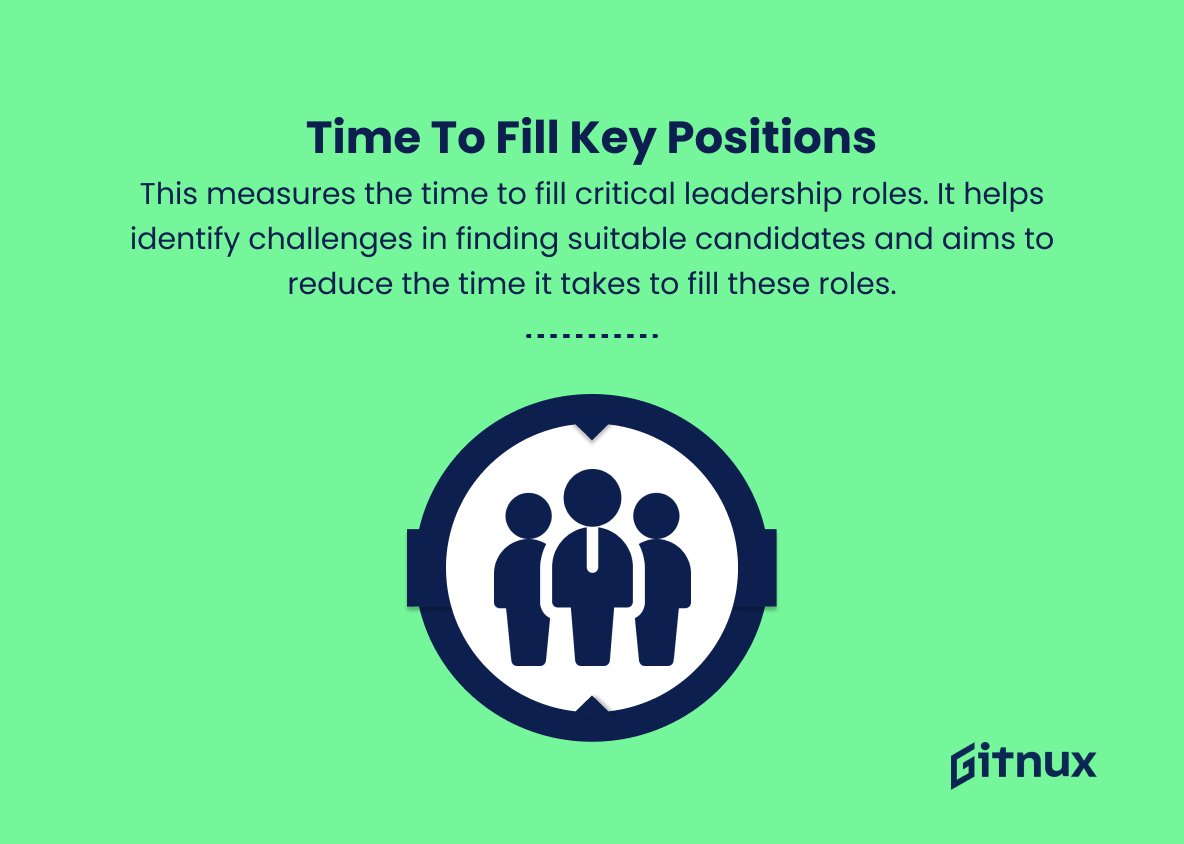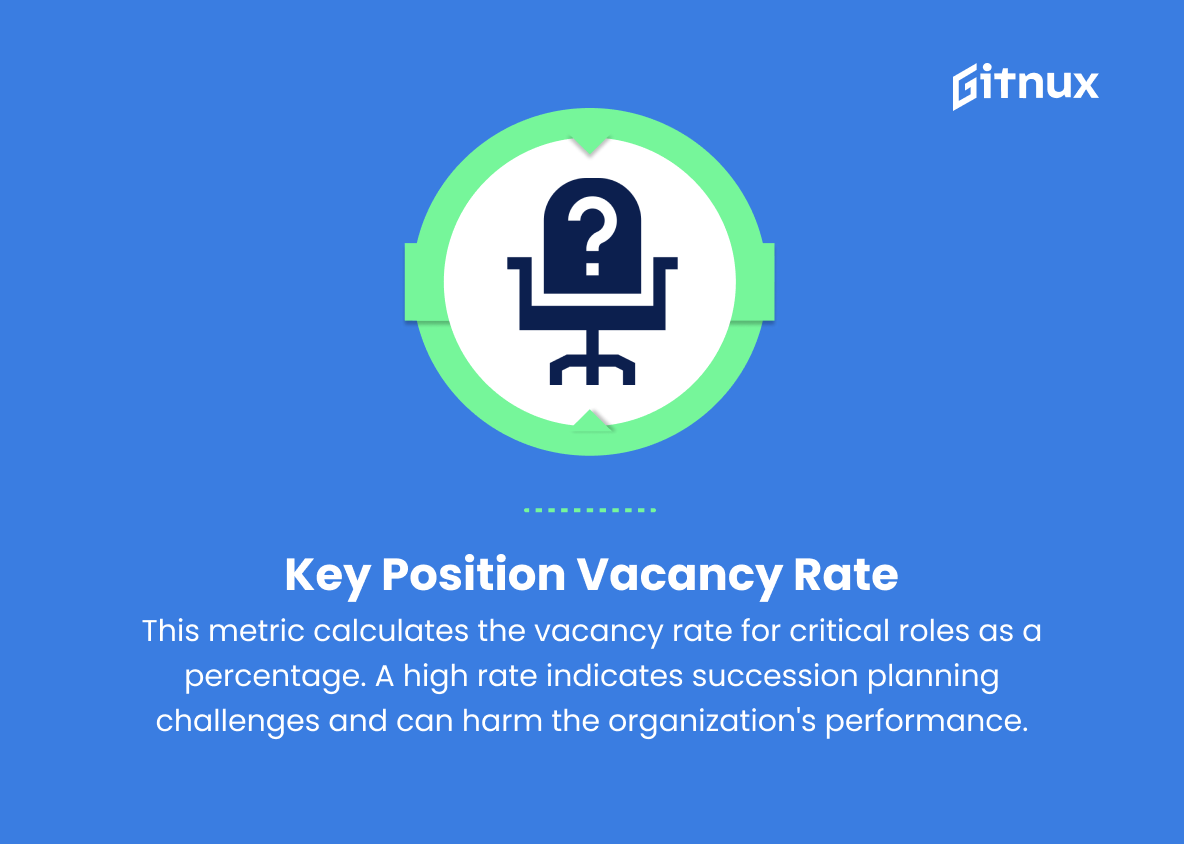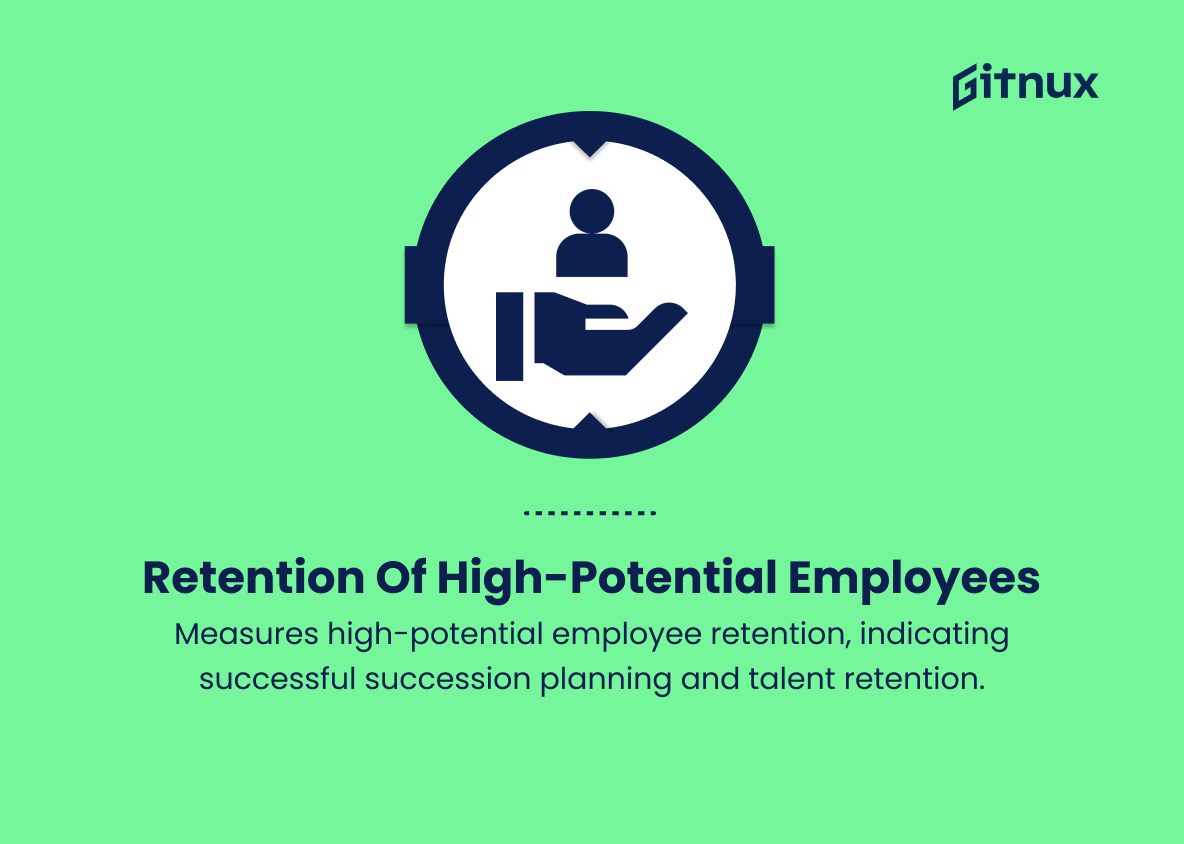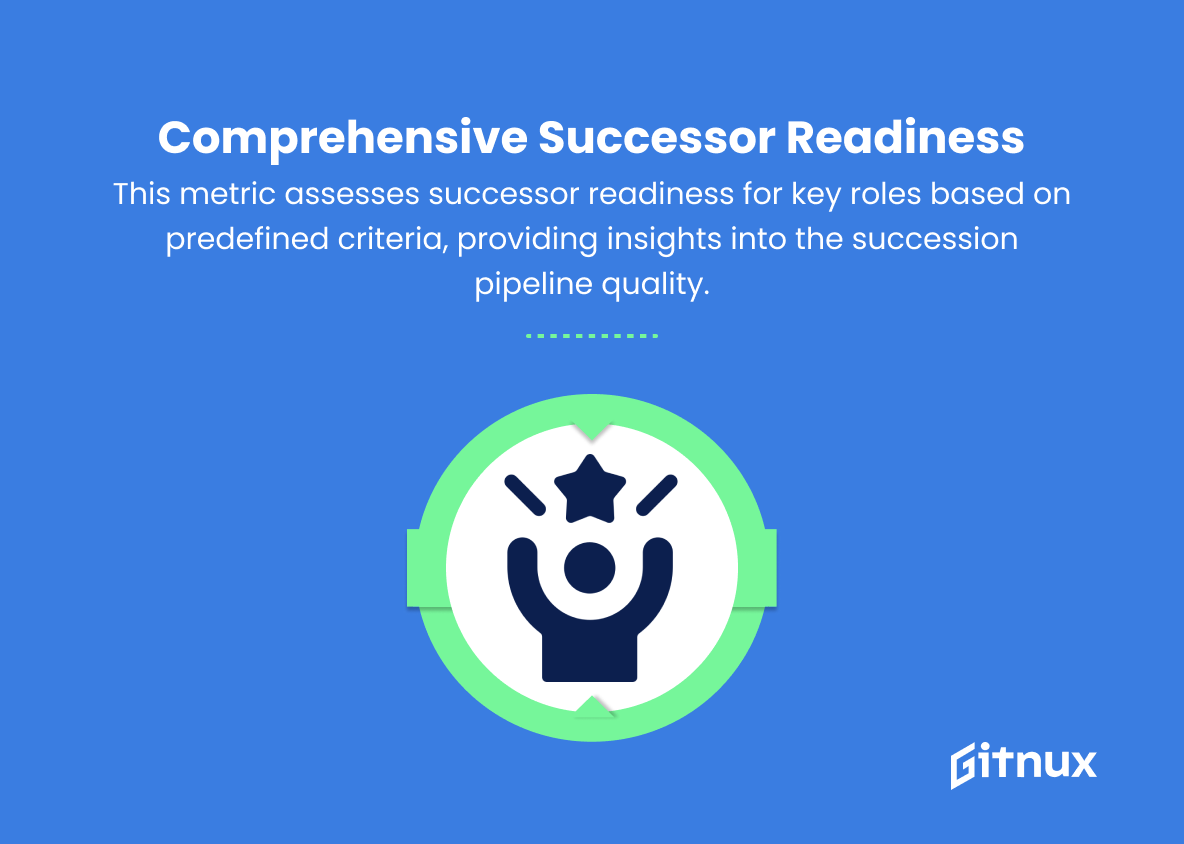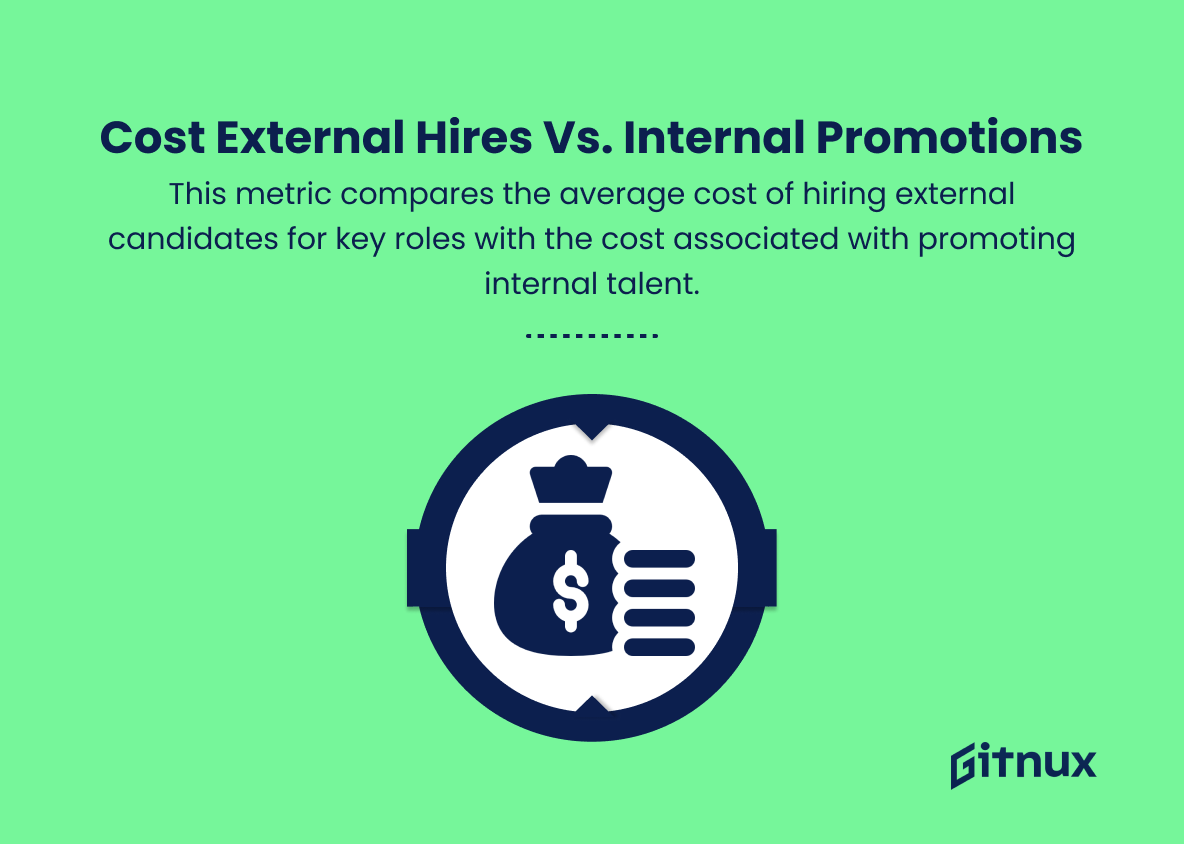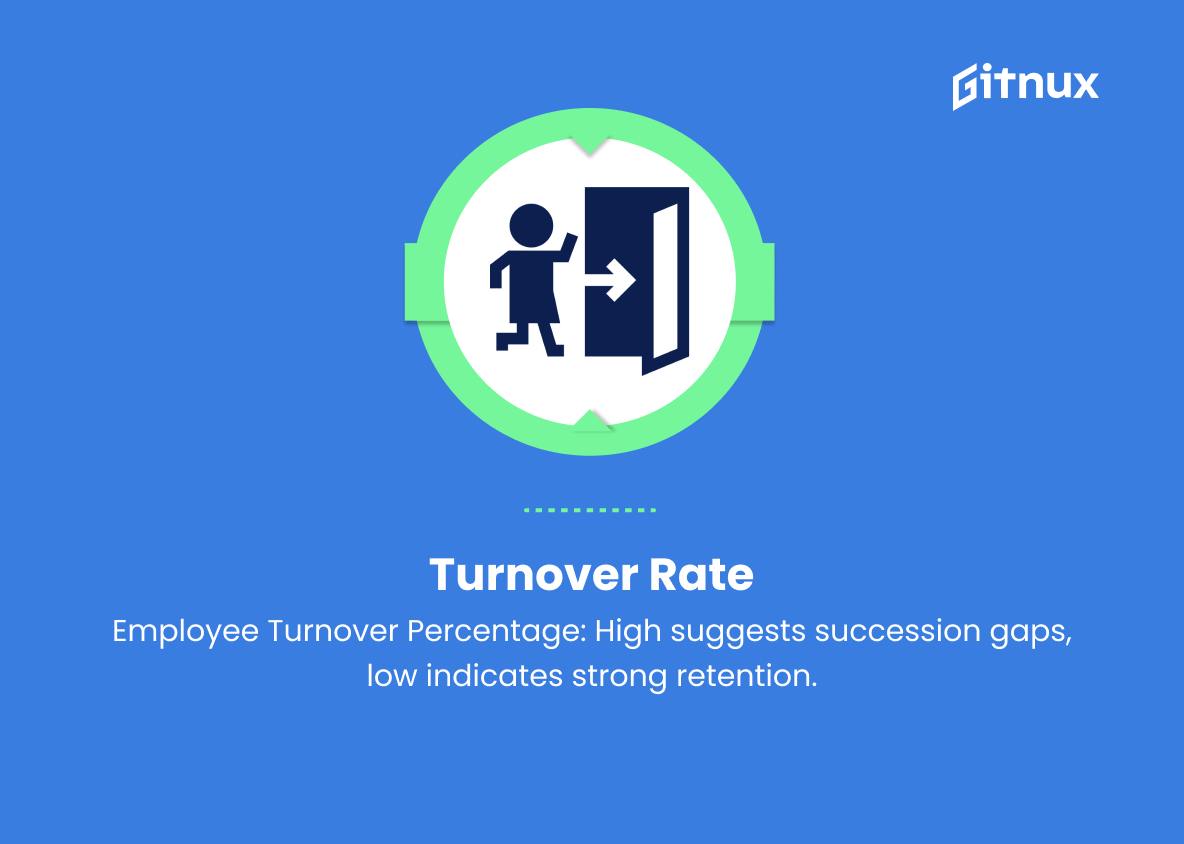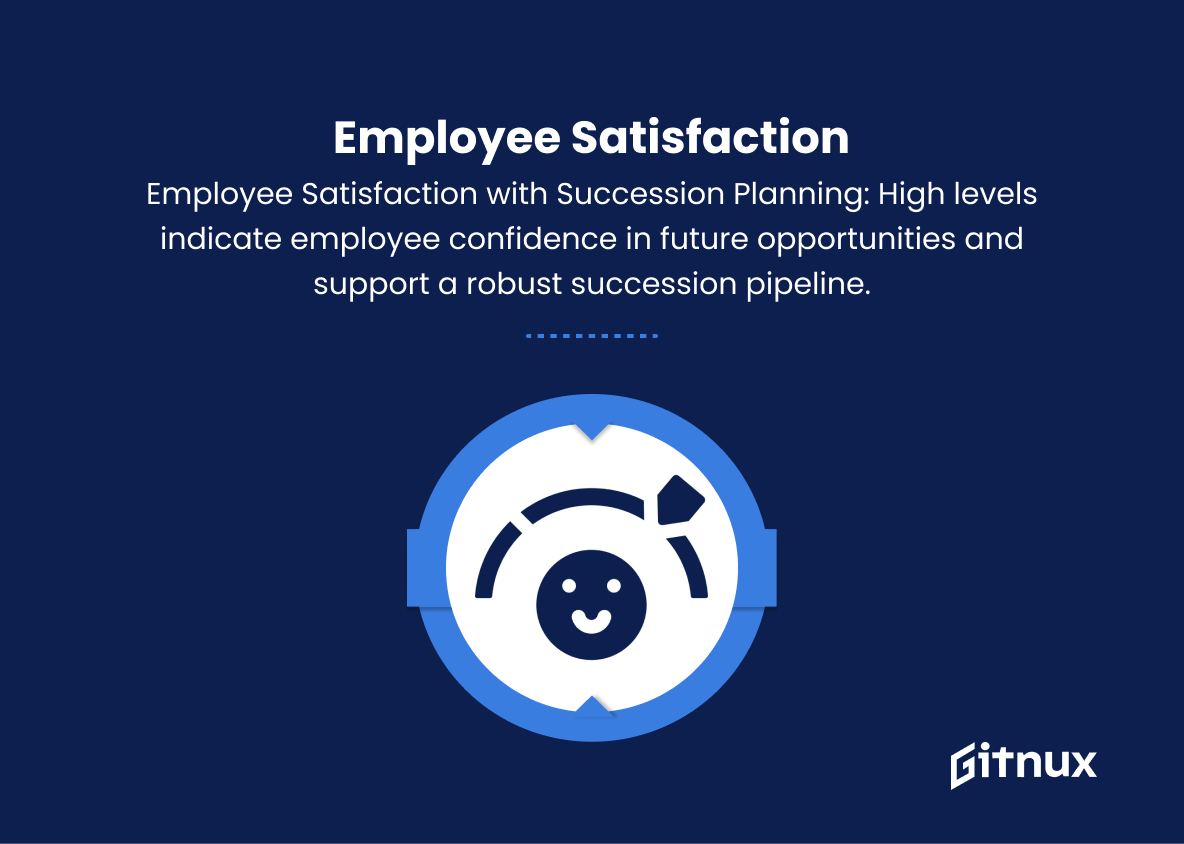Succession planning is crucial for an organization’s long-term success. It involves identifying and nurturing potential successors to ensure a seamless leadership transition. Measuring and analyzing succession planning metrics is important to evaluate progress and refine the approach. This blog post delves into the key elements of succession planning and how to use indicators to secure an organization’s profitability and stability.
Succession Planning Metrics You Should Know
1. Promotion Rate
This metric shows the percentage of employees who have been promoted within the organization in a given period. A high promotion rate indicates a healthy succession planning process that identifies and develops internal talent.
2. Time to Fill Key Positions
This measurement demonstrates the time it takes to fill critical leadership roles within the organization. By measuring this, organizations can identify challenges in finding and developing suitable candidates for key positions, ideally reducing the time to fill these roles.
3. Key Position Vacancy Rate
This metric quantifies the number of vacant key positions as a percentage of total critical roles within the organization. A high vacancy rate represents more significant succession planning challenges, negatively impacting the organization’s performance.
4. Bench Strength Ratio
This metric compares the number of high-potential employees (ready for essential roles) to the total number of critical positions. A higher ratio illustrates a strong pipeline of talent being developed for future leadership positions.
5. Retention Rate of High-potential Employees
This metric measures the percentage of high-potential employees who remain in the organization within a specific period. High retention rates are indicators of a successful succession planning approach, as they reflect the company’s ability to cultivate and retain top talent.
6. Comprehensive Successor Readiness
This metric evaluates the readiness level of identified successors for key roles based on pre-defined competencies and performance criteria. This measurement can inform organizations about the caliber of their succession pipeline.
7. Leadership Development Program Participation
The number or percentage of employees participating in leadership development programs designed to groom them for future key roles. Increased participation indicates a strong commitment to developing internal talent.
8. Cost of External Hires vs. Internal Promotions
This metric compares the average cost of hiring external candidates for key roles with the cost associated with promoting internal talent. A lower ratio implies a more cost-effective succession planning process, favoring internal promotions rather than external hires.
9. Turnover Rate
The percentage of employees who leave the organization within a given period. A high turnover rate, especially within key positions, can indicate a lack of robust succession planning, while a low turnover rate can reflect a successful employee retention strategy.
10. Employee Satisfaction with Succession Planning
A metric that surveys and measures employee satisfaction with the organization’s succession planning processes. High satisfaction levels signal that employees feel confident in their future opportunities within the company, contributing to a healthier succession pipeline.
Succession Planning Metrics Explained
Succession planning metrics optimize talent management. Key metrics include promotion rate, time to fill key positions, retention rate of high-potential employees, key position vacancy rate, bench strength ratio, leadership development program participation, cost of external hires versus internal promotions, turnover rate, and employee satisfaction. These metrics create a sustainable talent pipeline for the future.
Conclusion
Succession planning metrics are crucial for long-term success and stability. A proactive approach to leadership development, talent identification, and employee engagement enriches workforce growth and continuity. Tracking and analyzing metrics like skills gap analysis, succession rate, time-to-fill, and pipeline diversity helps make strategic, data-driven decisions to optimize succession planning. A well-executed succession plan reduces leadership change risks and prepares for future challenges, securing sustained success and competitiveness in the global market.
